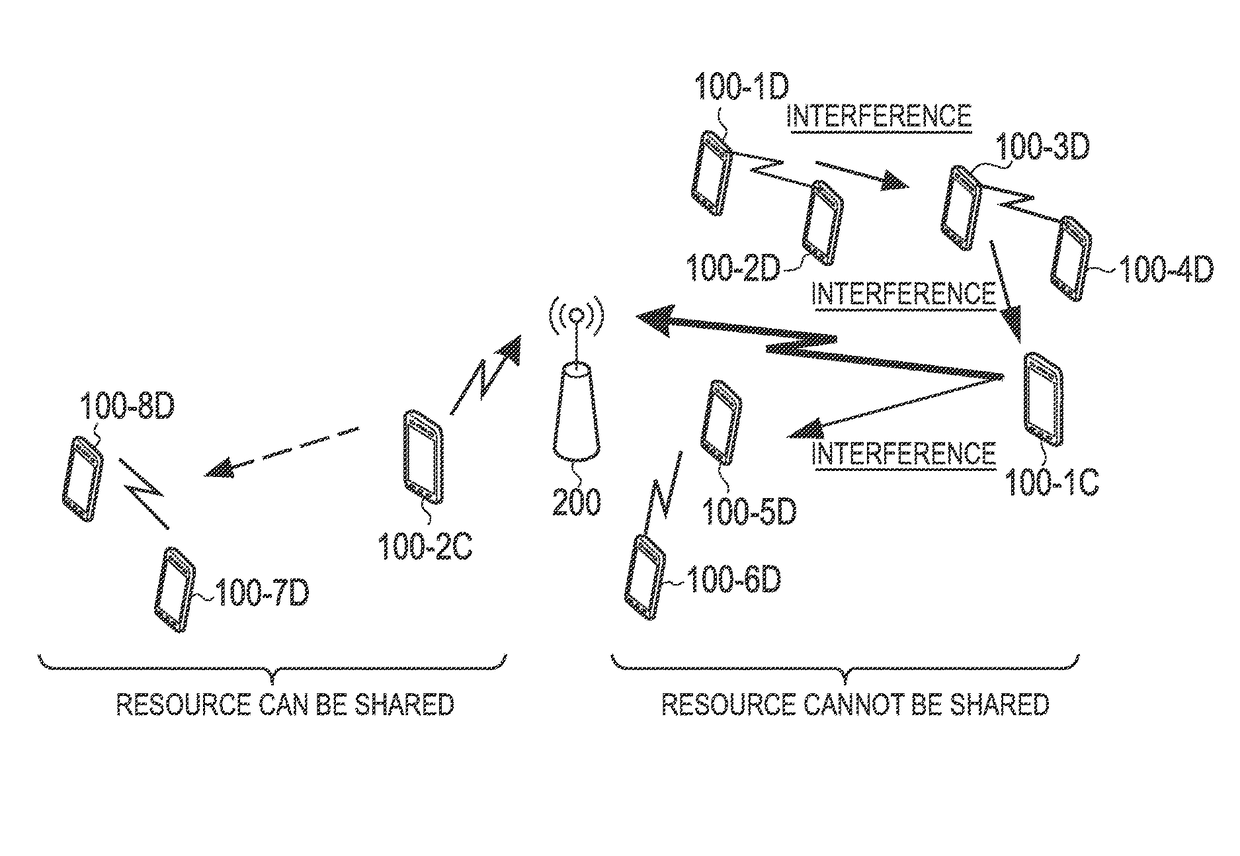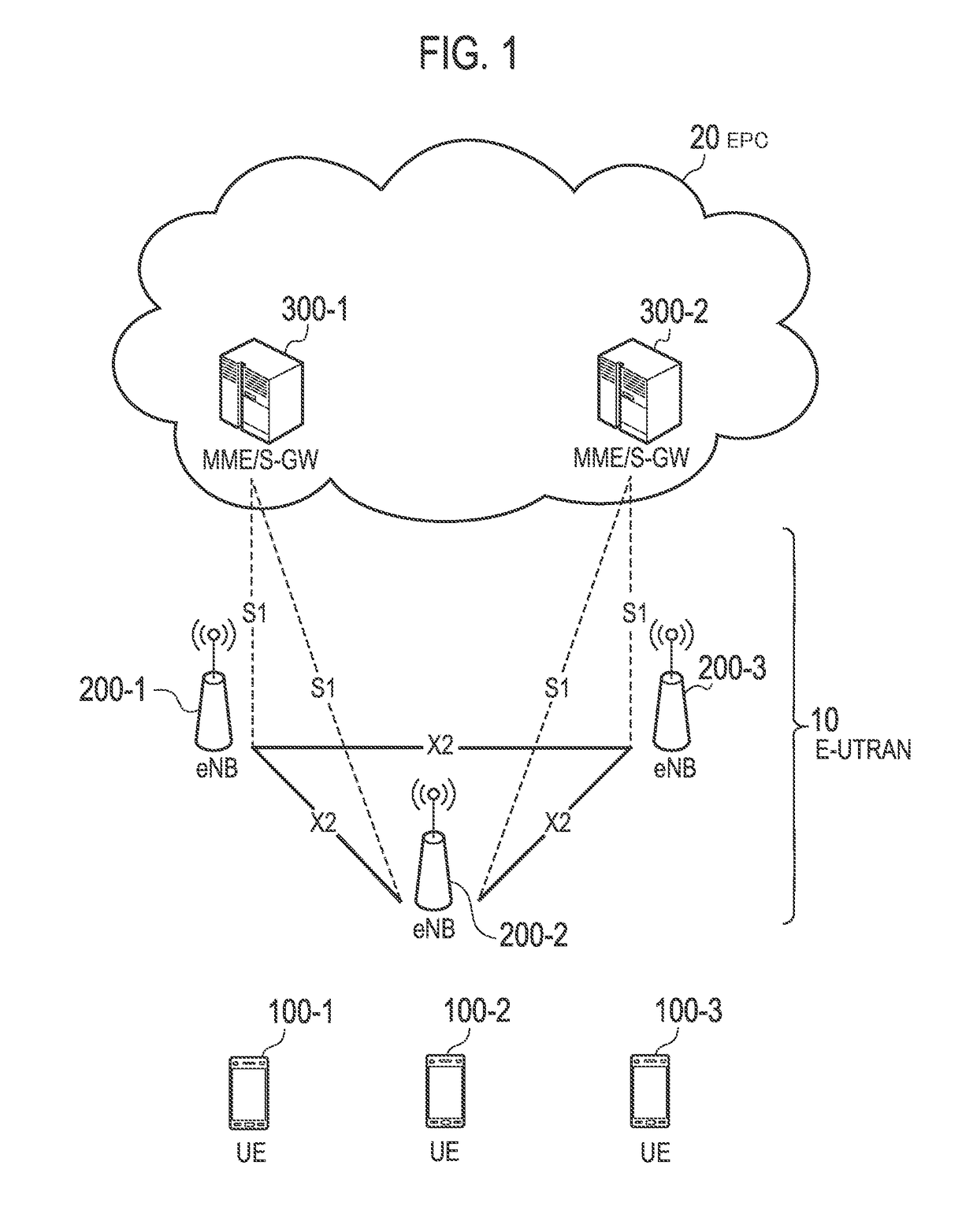Mobile communications directed to assignment of radio resources and reporting pathloss of D2D communications
a mobile communication and radio resource technology, applied in the field of mobile communication systems, communication apparatuses, and d2d terminals, can solve the problems of difficult to improve the use efficiency of radio resources in the mobile communication system, the quantity of cellular terminals is relatively low, and achieve the effect of preventing interference between cellular communication
- Summary
- Abstract
- Description
- Claims
- Application Information
AI Technical Summary
Benefits of technology
Problems solved by technology
Method used
Image
Examples
embodiment
Overview of Embodiment
[0038]A mobile communication system according to a first embodiment supports cellular communication in which a data path passes through a core network and D2D communication that is direct device-to-device communication in which the data path does not pass through the core network. The system comprises: a communication apparatus that assigns a radio resource to a D2D terminal that performs the D2D communication. The communication apparatus performs assignment determination as to whether a dedicated radio resource not shared with the cellular communication is assigned to the D2D terminal or a shared radio resource shared with the cellular communication is assigned to the D2D terminal.
[0039]In the first embodiment, the communication apparatus performs the assignment determination on the basis of an amount of radio resource to be used in a cell in which the D2D terminal exists.
[0040]In the first embodiment, the communication apparatus performs the assignment determ...
first embodiment
[0064]Hereinafter, with reference to the accompanying drawings, description will be provided for an embodiment in which D2D communication is introduced to a mobile communication system (an LTE system) configured to comply with the 3GPP standards.
[0065](LTE System)
[0066]FIG. 1 is a configuration diagram of an LTE system according to the first embodiment. As shown in FIG. 1, the LTE system includes a plurality of UEs (User Equipments) 100, E-UTRAN (Evolved-UMTS Terrestrial Radio Access Network) 10, and EPC (Evolved Packet Core) 20. The E-UTRAN 10 corresponds to a radio access network and the EPC 20 corresponds to a core network. The E-UTRAN 10 and the EPC 20 configure a network of the LTE system.
[0067]The UE 100 is a mobile communication apparatus and performs radio communication with a cell (a serving cell) with which a connection is established. The UE 100 corresponds to a user terminal.
[0068]The E-UTRAN 10 includes a plurality of eNBs 200 (evolved Node-Bs). The eNB 200 corresponds ...
second embodiment
[0182]Hereinafter, a second embodiment will be described while focusing on differences from the aforementioned first embodiment. In the second embodiment, on the basis of a mode in which the D2D radio resource can be used also for the cellular radio resource (the shared resource assignment mode), a countermeasure against interference is taken, so that communication quality is prevented from deteriorating while improving the use efficiency of the radio resource.
[0183](1) Operation Overview
[0184]In the second embodiment, as shown in FIG. 8, an operation environment in which the cellular UE 100-C and D2D UE 100-D exist in the same cell is assumed. Moreover, it is assumed that the shared resource assignment mode is applied to the D2D UE 100-D. That is, the LTE system according to the second embodiment has the eNB 200, the cellular UE 100-C that performs the cellular communication in the cell of the eNB 200, and the D2D UE 100-D that performs the D2D communication in the cell by using th...
PUM
 Login to View More
Login to View More Abstract
Description
Claims
Application Information
 Login to View More
Login to View More - R&D
- Intellectual Property
- Life Sciences
- Materials
- Tech Scout
- Unparalleled Data Quality
- Higher Quality Content
- 60% Fewer Hallucinations
Browse by: Latest US Patents, China's latest patents, Technical Efficacy Thesaurus, Application Domain, Technology Topic, Popular Technical Reports.
© 2025 PatSnap. All rights reserved.Legal|Privacy policy|Modern Slavery Act Transparency Statement|Sitemap|About US| Contact US: help@patsnap.com



